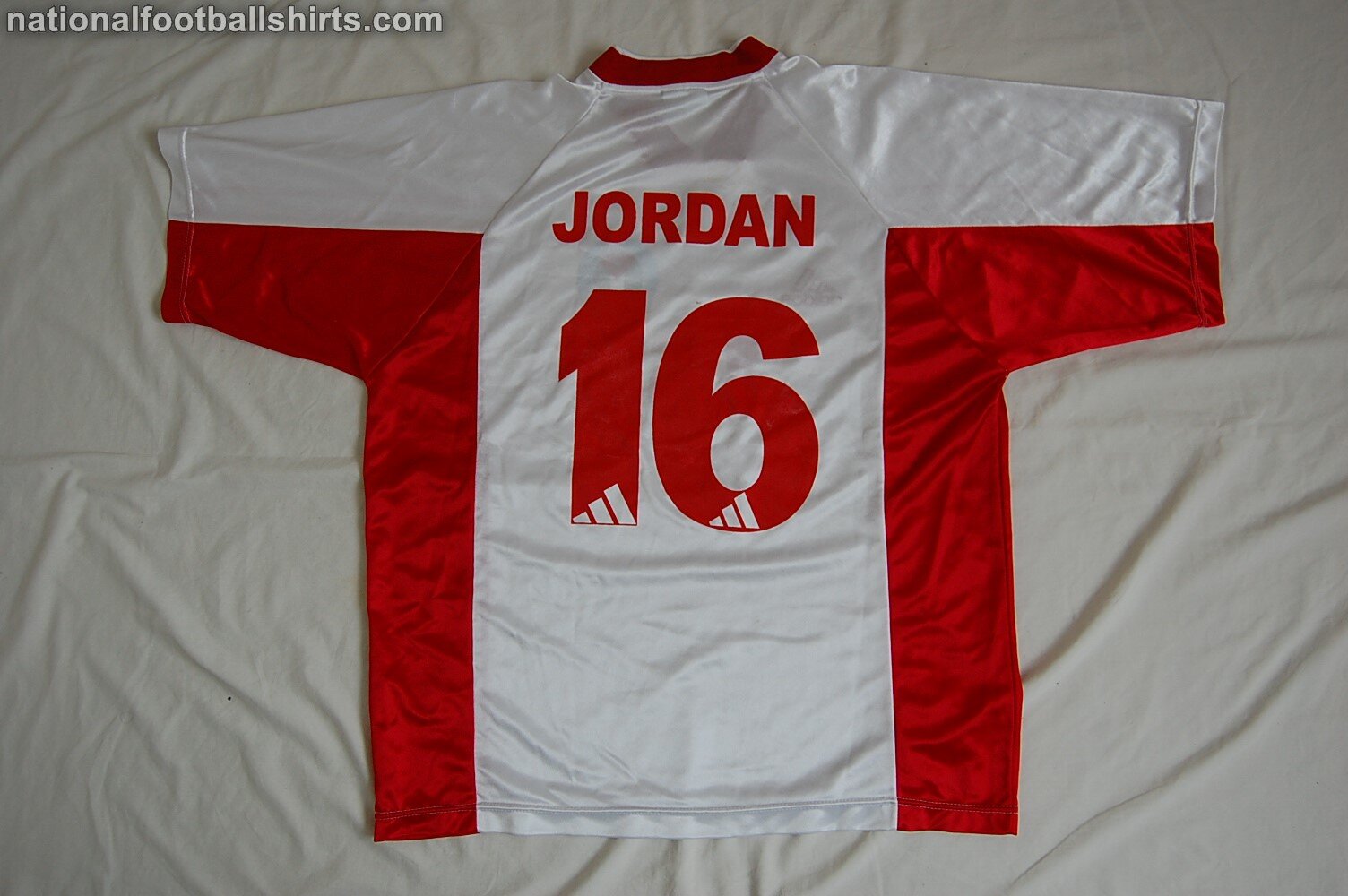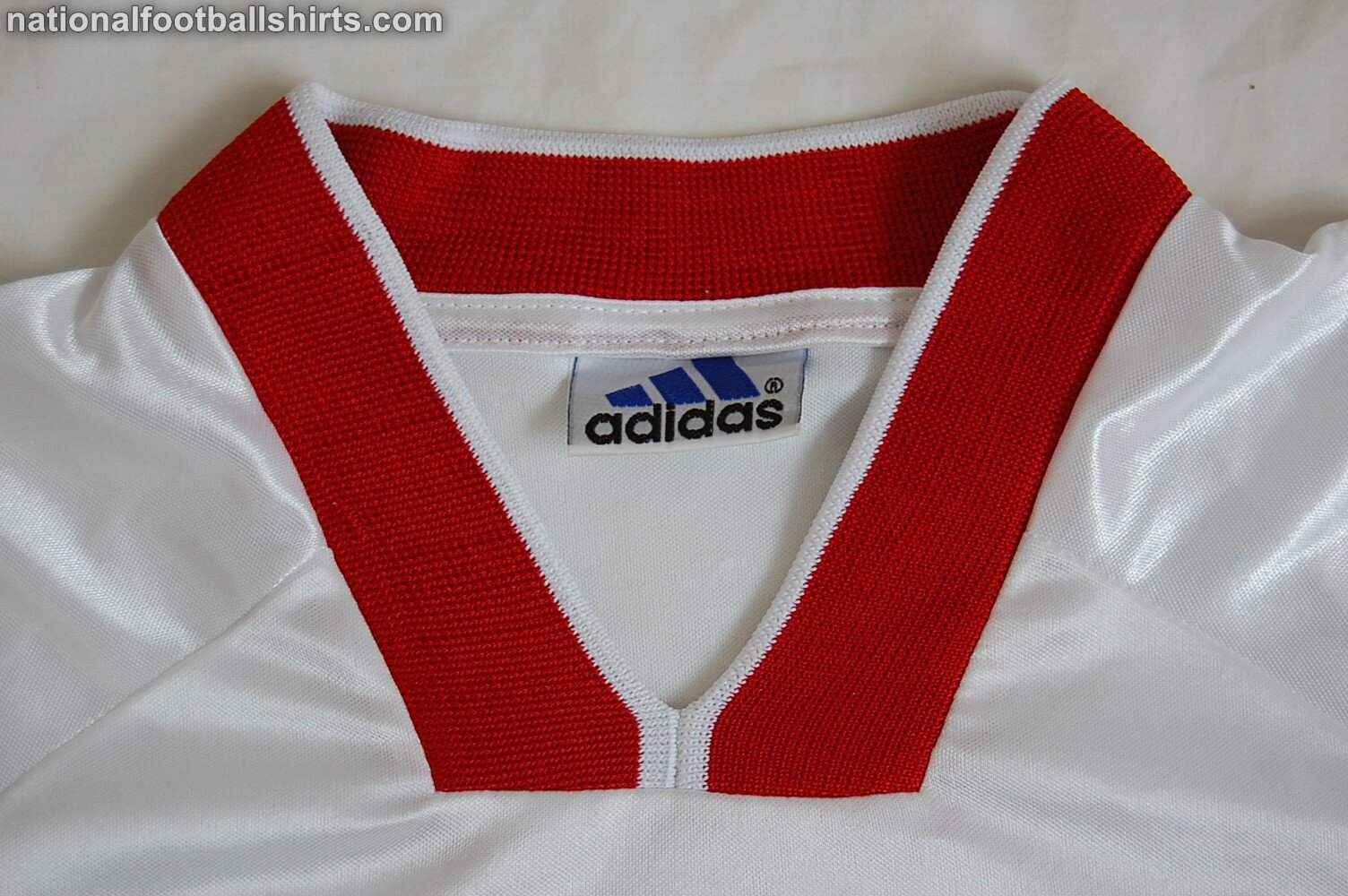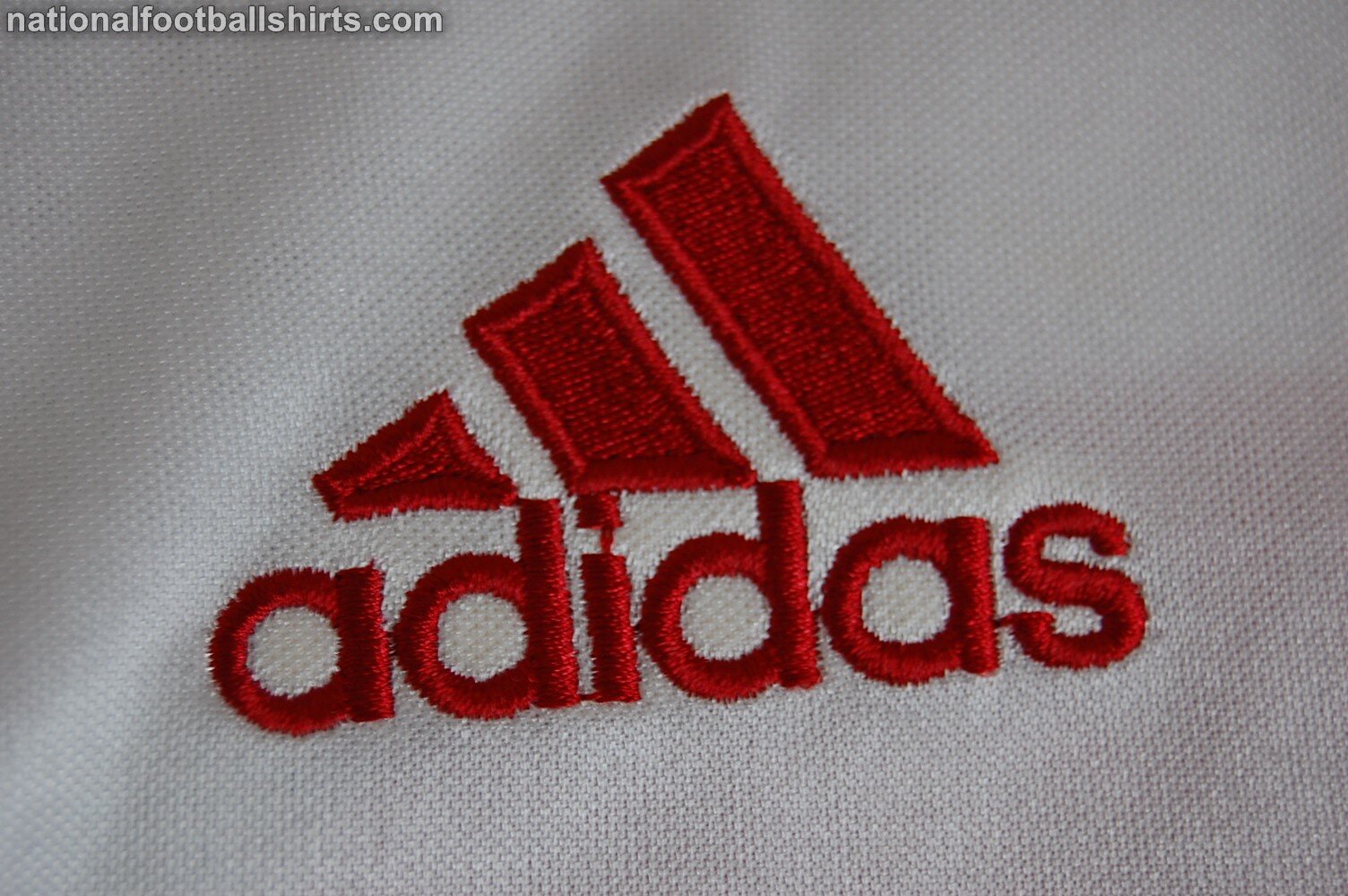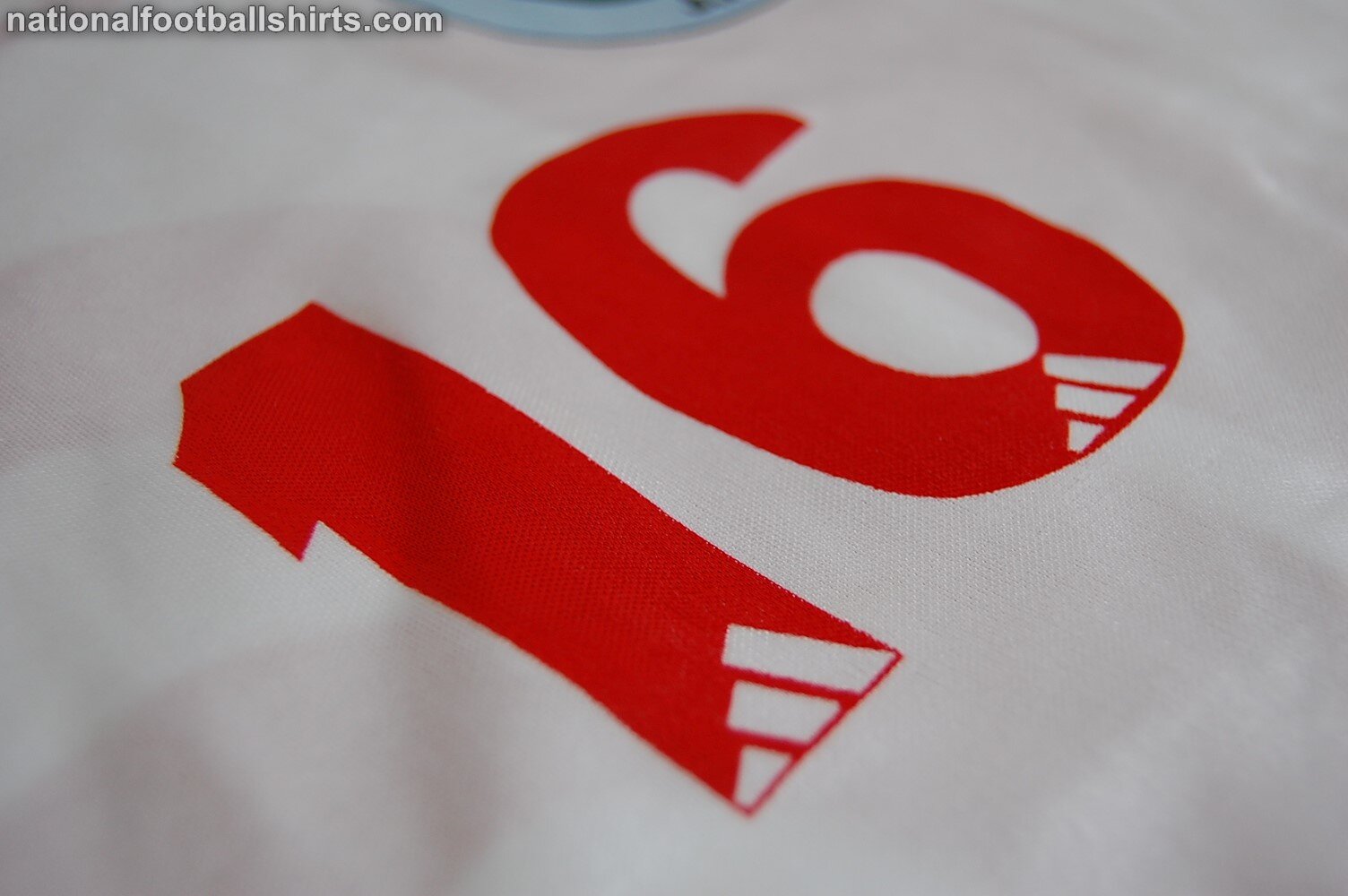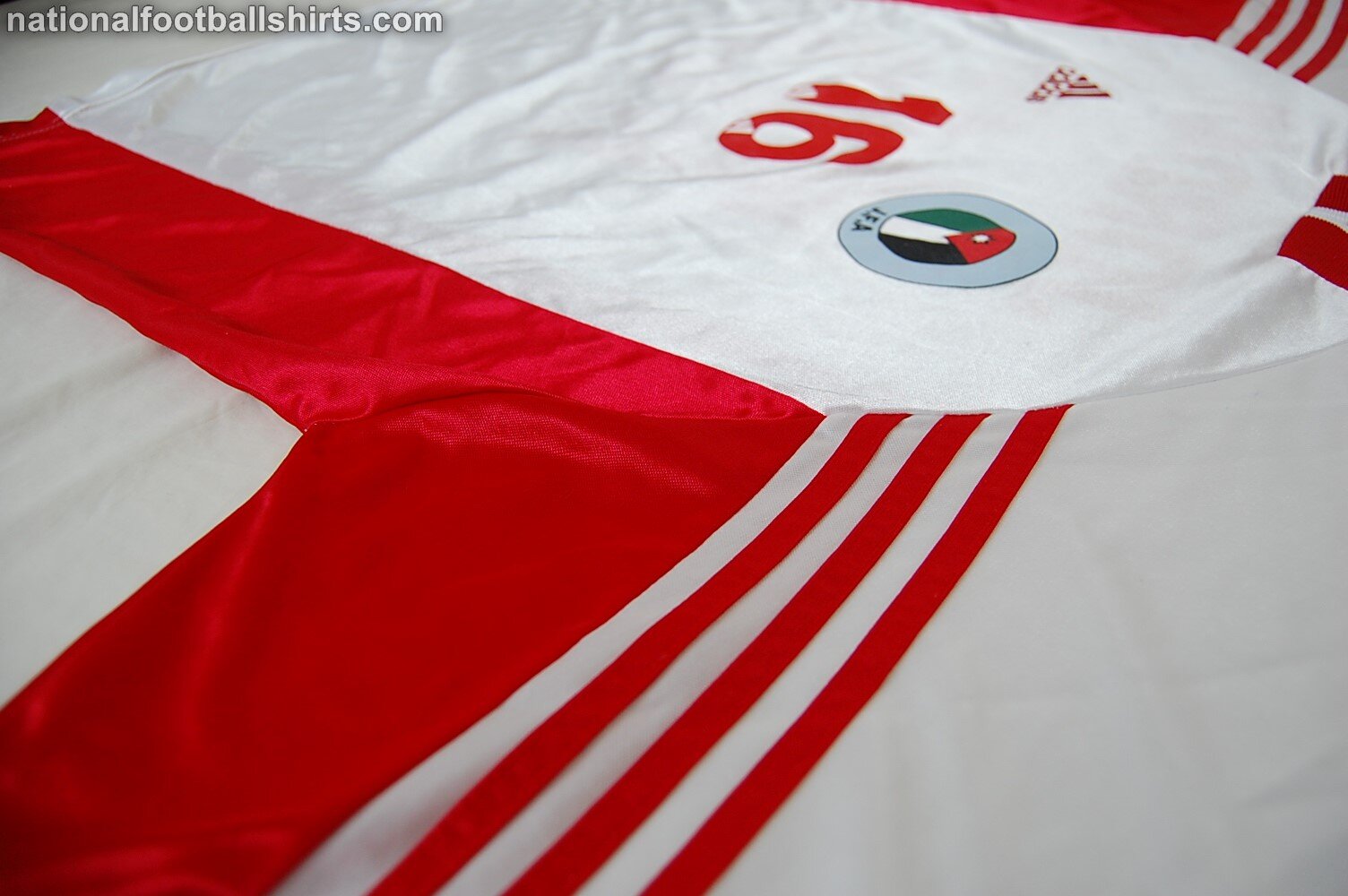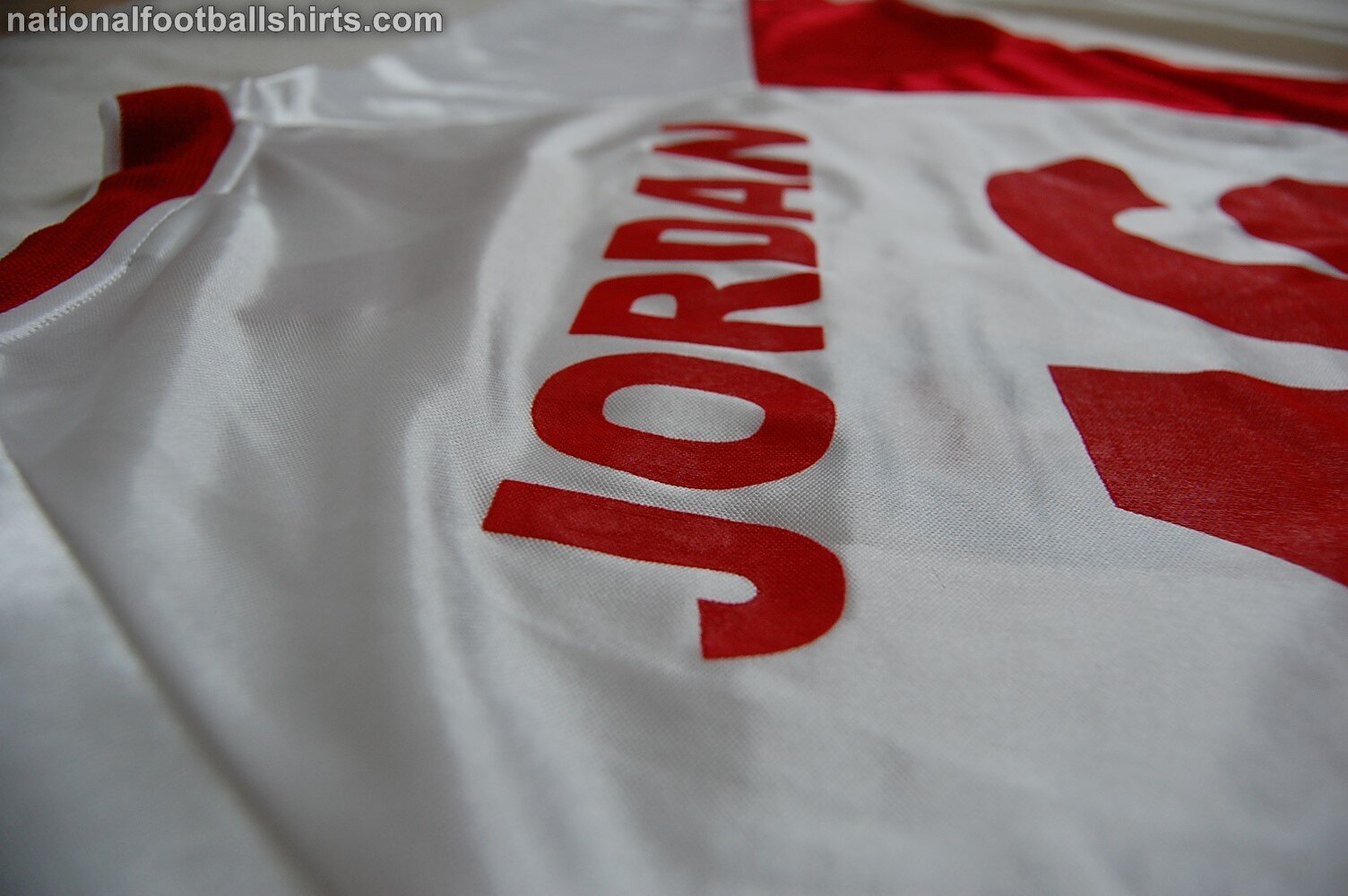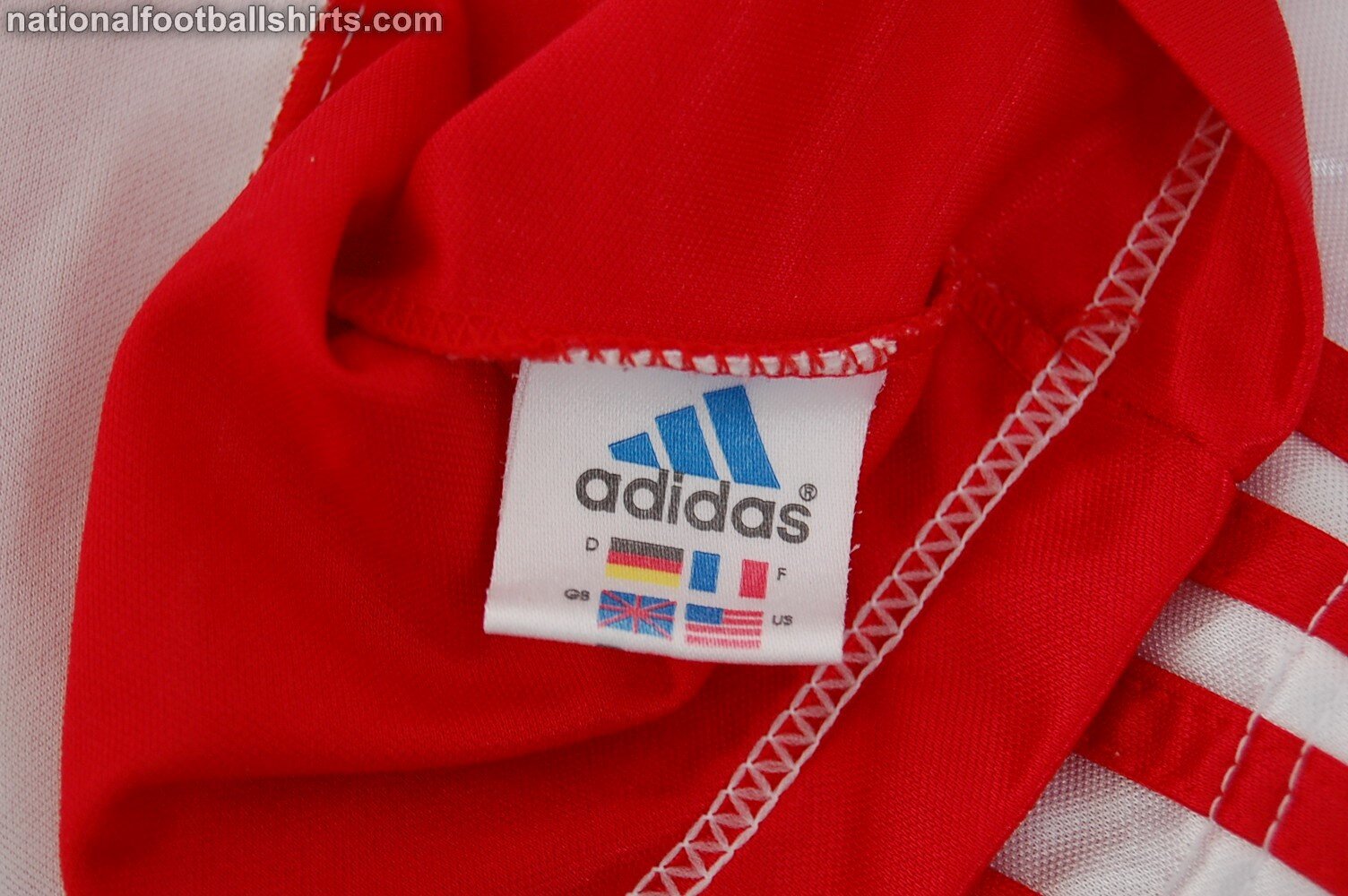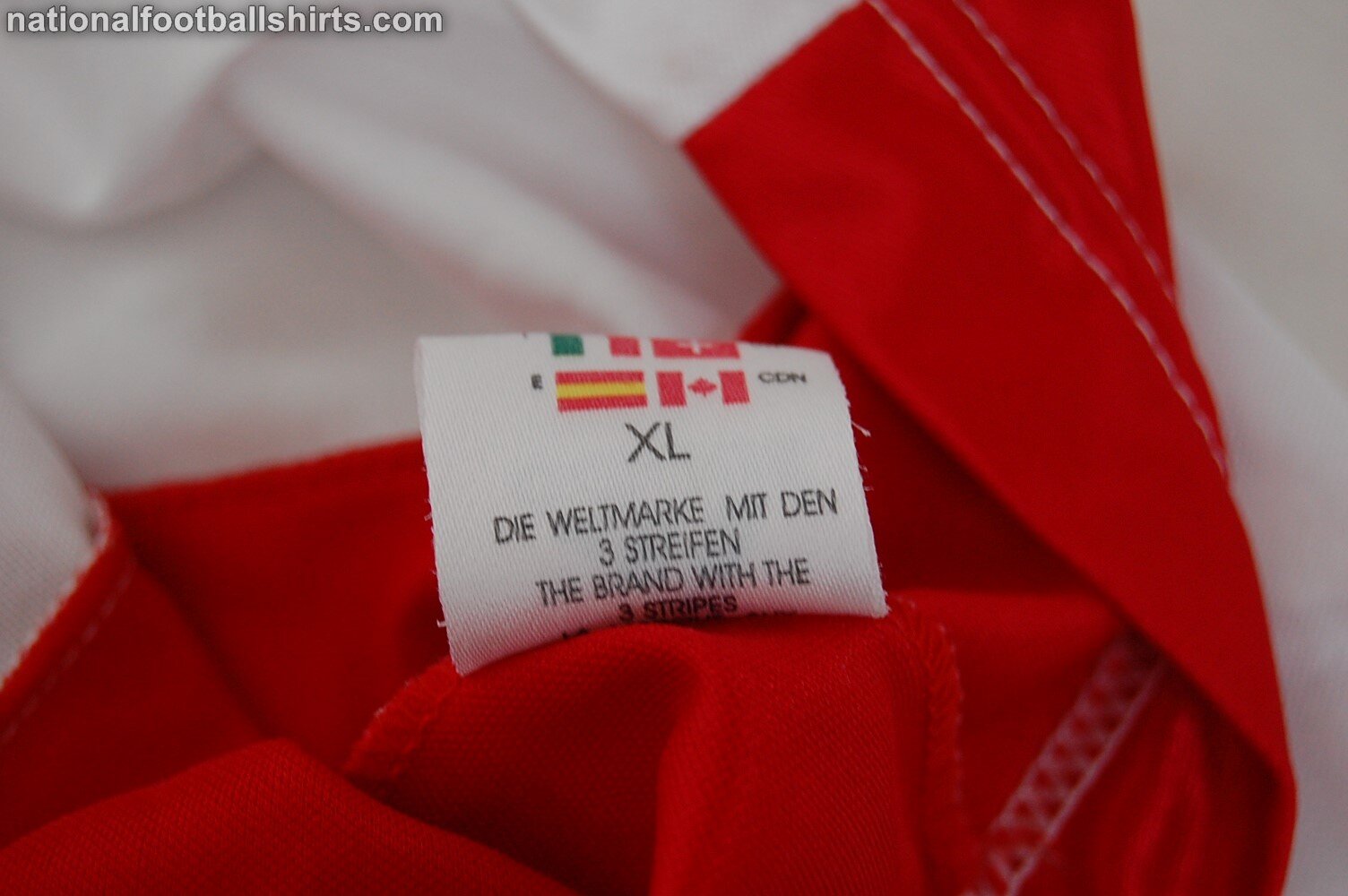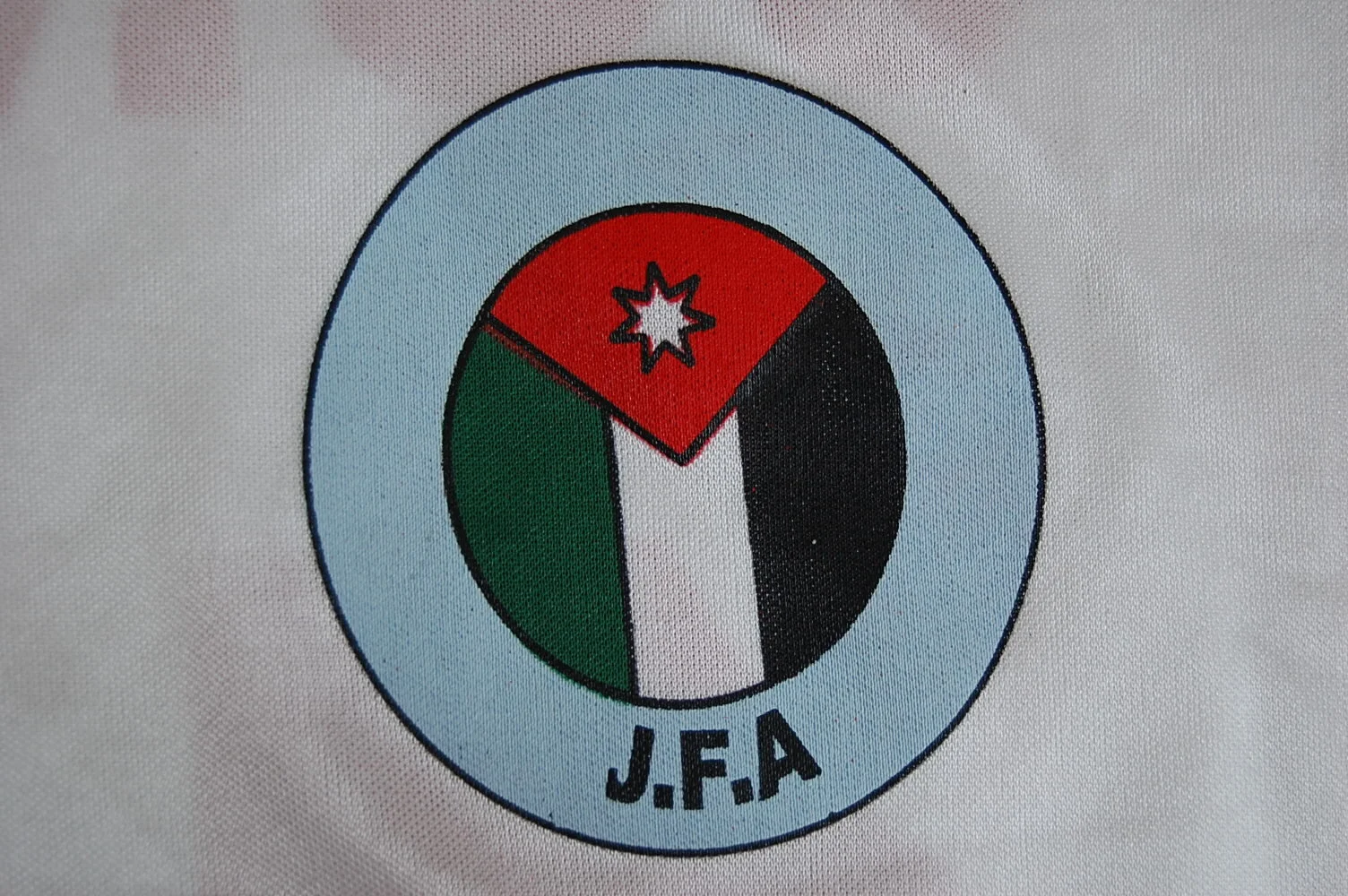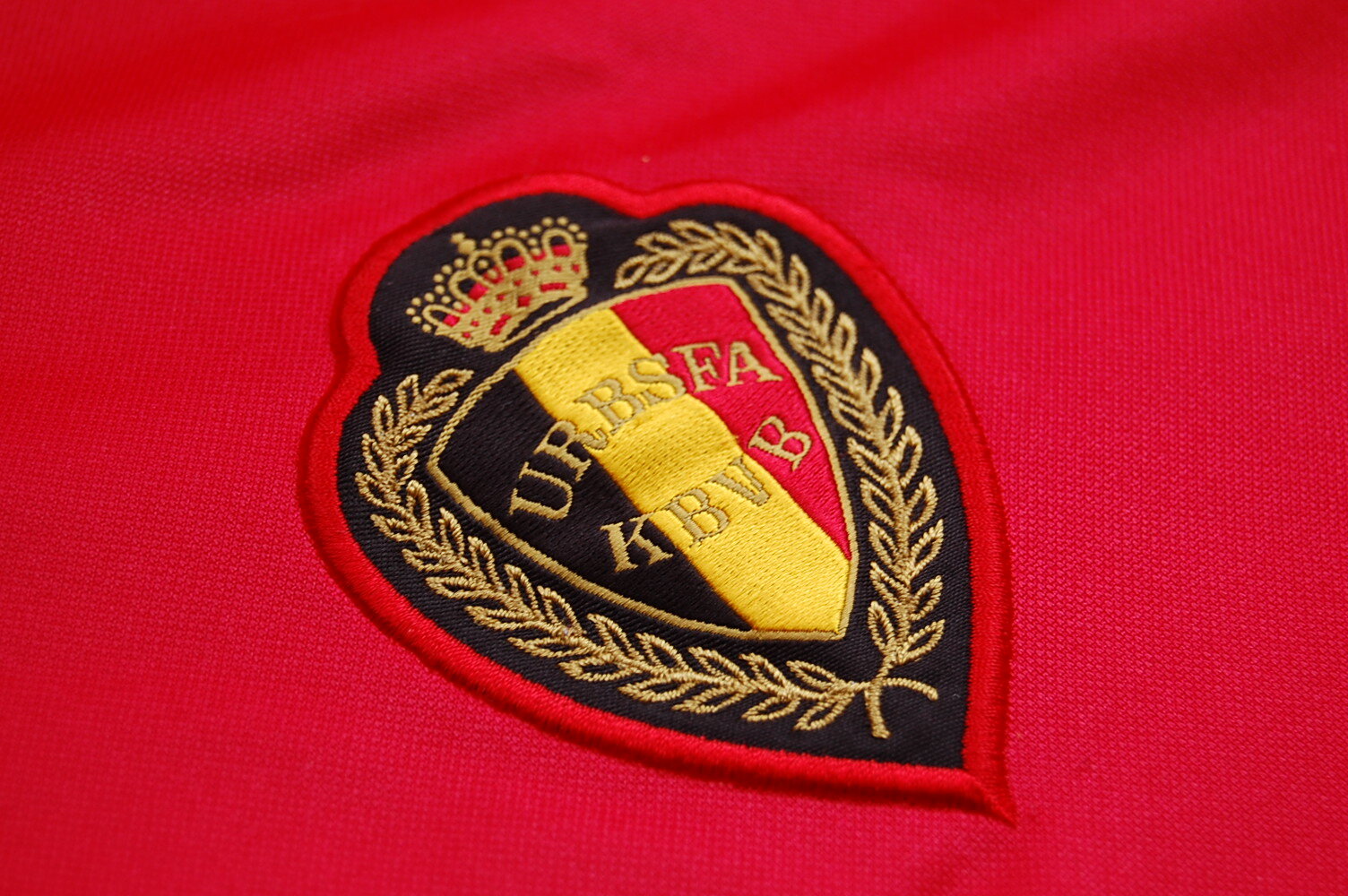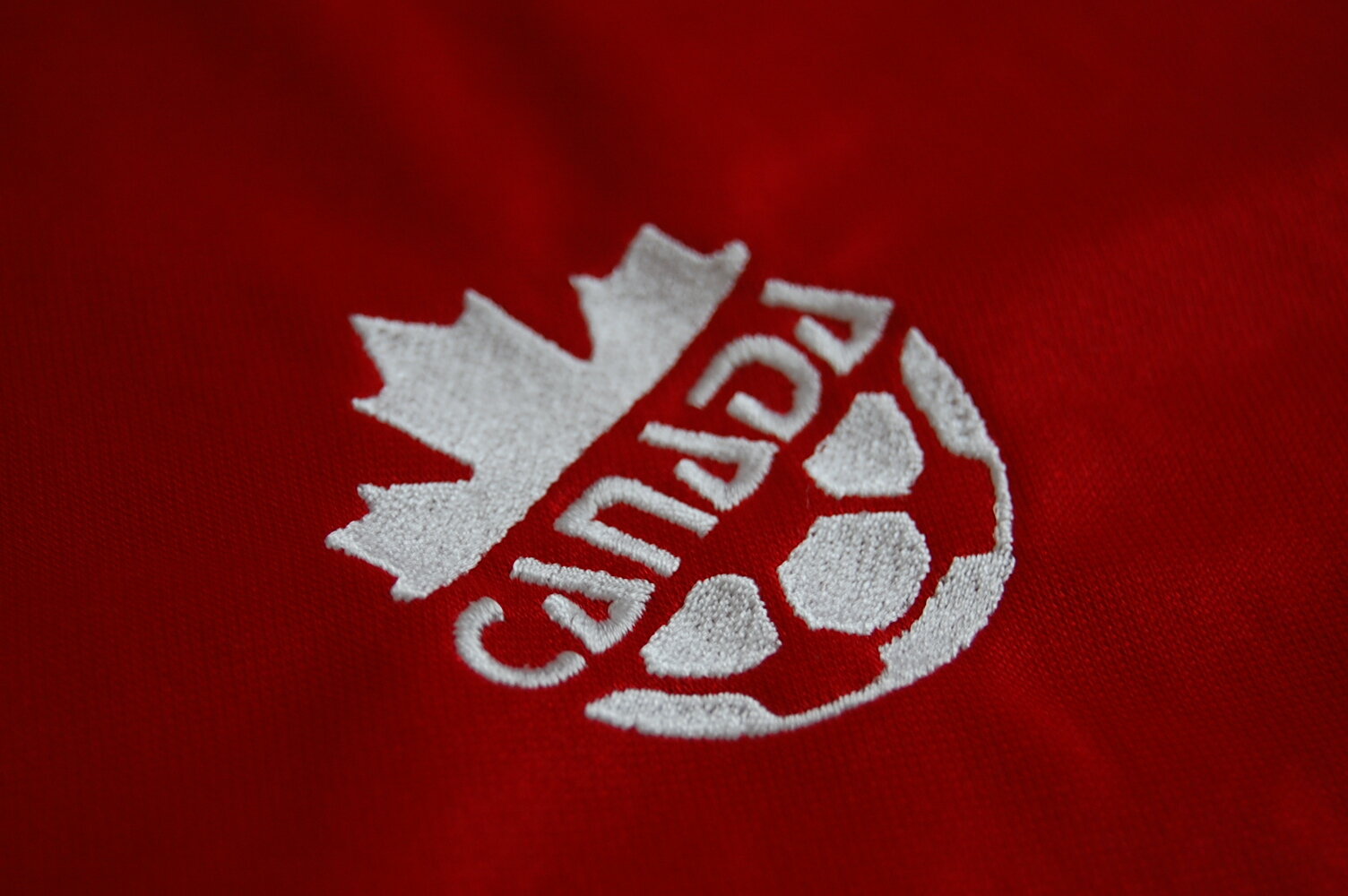Jordan
Home; 1999/2000
This Jordan home shirt was worn in 1999 and 2000, though on first glance you’d be forgiven for thinking it was a decade older than that. The template was a simplified version of the shirt worn by Spain at the 1998 World Cup, with Spain’s white away shirt really showing the similarities. Unlike that Sapin shirt, the Jordan shirt is a very shiny material, which Adidas was also using at the time (such as with Real Madrid and Galatasaray), and the print for the crest is not a heat transfer but a screen print. At first I wondered if it was a cheaper fan shirt, but upon digging into photos I can verify that it is the exact same shirt as worn on the field, including interestingly being worn in a friendly against Serbian club Red Star Belgrade. The placement of the inner tags suggest it is a locally produced shirt under licence from Adidas, as it is a bit different to how the company did it in their major markets and closer to the infamous Argentinian-made Adidas shirts of the early to mid-90s. There is also a lack of a three-stripe shadow-weave in the fabric that could be seen on other versions of this template.
I can’t say if this was match worn or issued, but it is at least player-spec. It’s biggest selling point though, is that it was given the royal approval of King Abdullah II of Jordan, who could be seen wearing it in the stands throughout the 1999 Pan Arab Games football tournament. Even as late as 2015, images of him wearing the shirt were still in use in the stadium.
That 1999 Pan Arab Games were held in Jordan, and the football tournament was won by the hosts in this shirt. Jordan ending up beating Iraq in the final in a dramatic penalty shoot out, after an even more dramatic finish in which Iraq came from 4-0 down in the last twenty minutes of normal time. It was the second Games in a row that Jordan won, which to date are the only two significant competitions won by the team. Despite playing their first game in the early 1950s, it was around the turn of the millennium when Jordan began to make any real mark on the international game. After that pair of Pan Arab wins, the team began to qualify for the Asian Cup for the first time. Since their first qualification in 2004, they qualified for three of the next four tournaments.
